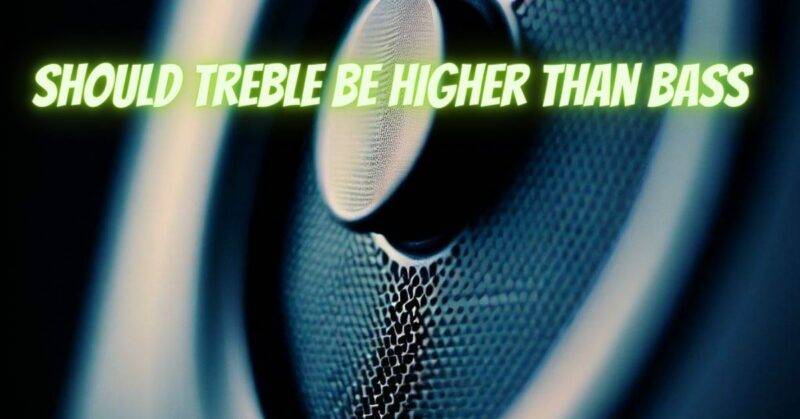Treble and bass are two of the most important frequency ranges in music. Treble refers to the high frequencies, such as vocals, cymbals, and triangles. Bass refers to the low frequencies, such as kick drums, bass guitars, and subwoofers.
A good balance of treble and bass is essential for creating a full and rich sound. However, it can be difficult to know which frequency range to boost if you are new to audio production.
Which Should You Boost?
The answer to the question of which frequency range to boost depends on a number of factors, including the type of music you are making, your personal preferences, and the equipment you are using.
In general, however, it is a good idea to boost the treble slightly more than the bass. This is because the human ear is more sensitive to high frequencies than low frequencies.
Boosting the treble can help to make vocals and other high-pitched instruments more clear and present in the mix. It can also help to add sparkle and air to the overall sound.
Boosting the bass can help to add warmth and depth to the mix. It can also help to make the mix “knock” harder.
How Much Should You Boost?
It is important to boost the treble and bass in moderation. Boosting too much treble can make the sound harsh and fatiguing. Boosting too much bass can make the sound muddy.
A good starting point is to boost the treble and bass by 2-3 dB. You can then adjust the levels to taste.
Tips for Balancing Treble and Bass
Here are a few tips for balancing treble and bass:
- Use reference tracks. Listen to other tracks in the same genre as your music and pay attention to the balance of treble and bass. Try to get your mix to sound similar to the reference tracks.
- Use a frequency analyzer. A frequency analyzer can help you to see how the treble and bass are distributed in your mix. This can help you to identify any areas that need to be adjusted.
- EQ each instrument individually. EQing each instrument individually can help you to create a better balance of treble and bass in the mix.
- Use compression. Compression can help to tighten up the bass and make the treble more punchy.
Balancing treble and bass is an important part of audio production. By using the tips above, you can create a mix that is full, rich, and well-balanced.
Here are some additional tips:
- Boost the treble on lead instruments and vocals. This will help them to stand out in the mix.
- Boost the bass on instruments that provide the foundation of the mix, such as kick drums and bass guitars. This will help to create a solid foundation for the mix.
- Cut the treble on instruments that are too harsh or piercing. This can help to make the mix more smooth and listenable.
- Cut the bass on instruments that are too muddy or booming. This can help to clean up the mix and make it easier to hear the other instruments.
Ultimately, the best way to balance treble and bass is to experiment and listen to your mix with fresh ears. There is no one-size-fits-all solution, and the best balance will vary depending on the type of music you are making and your personal preferences.


